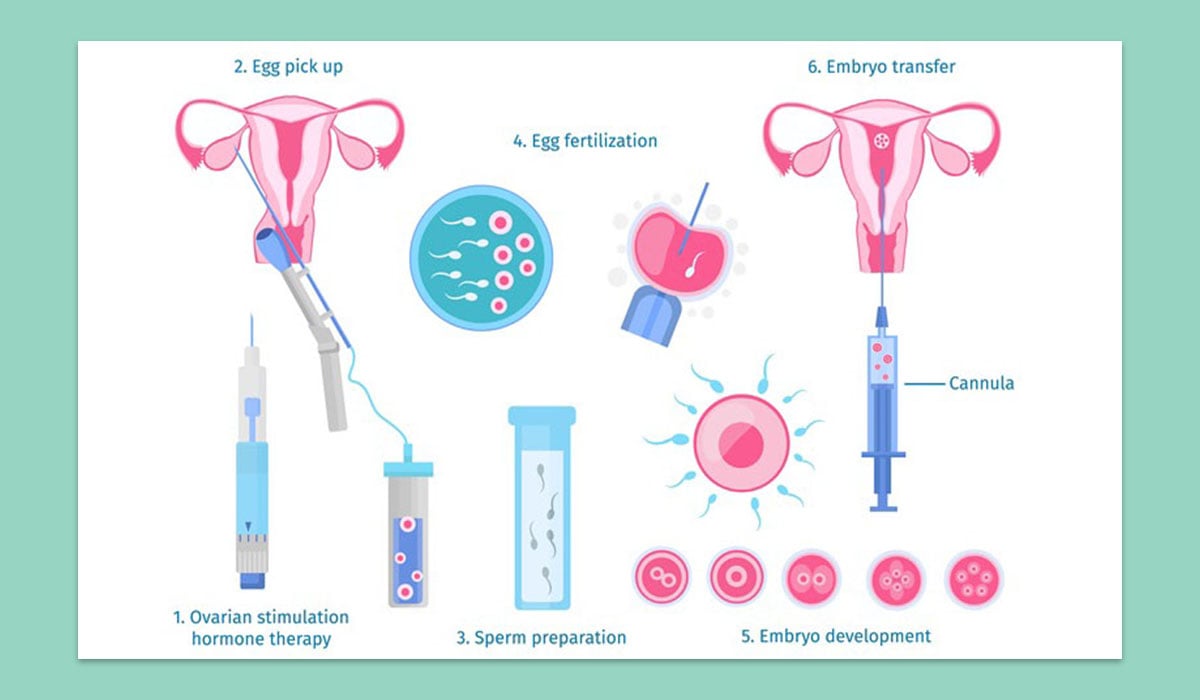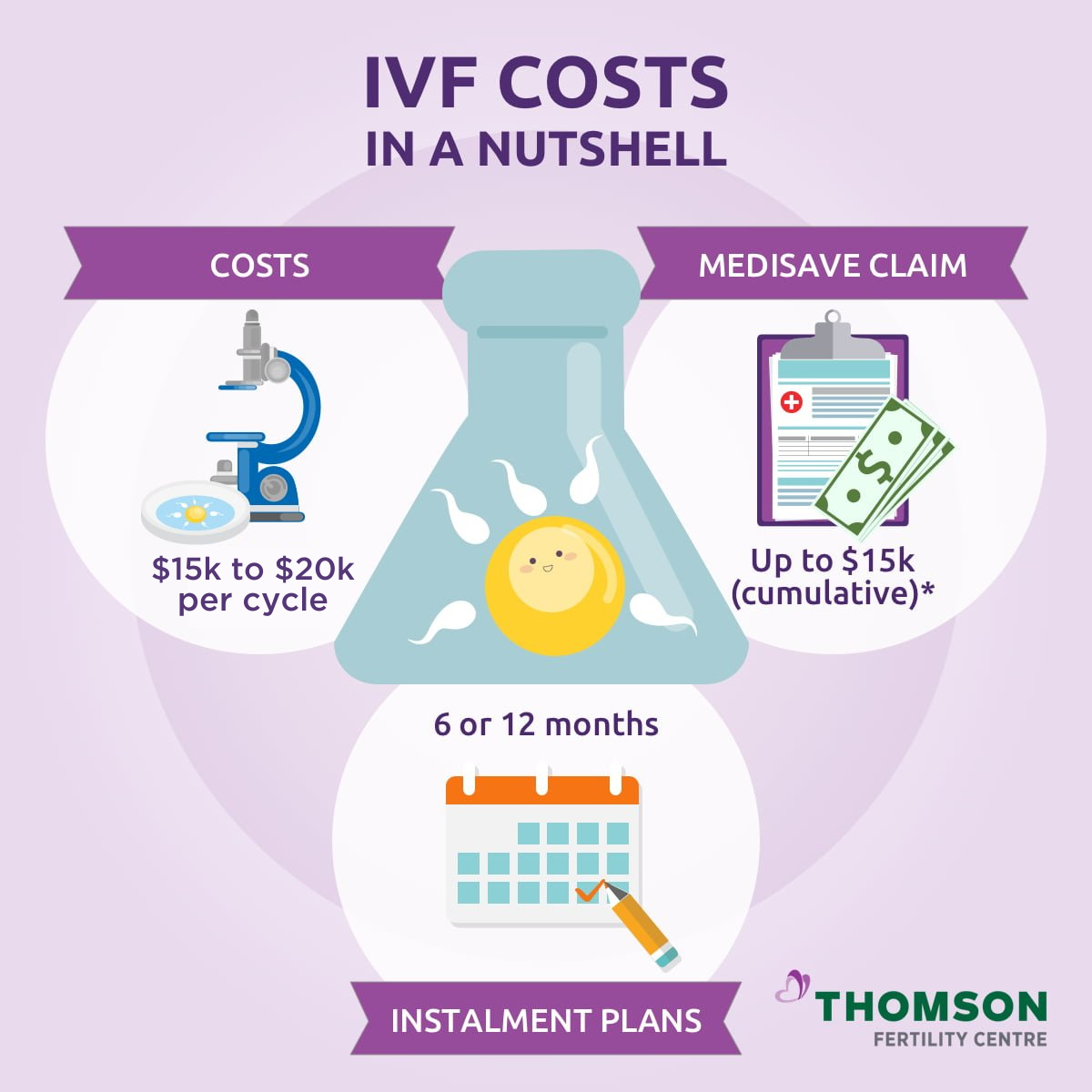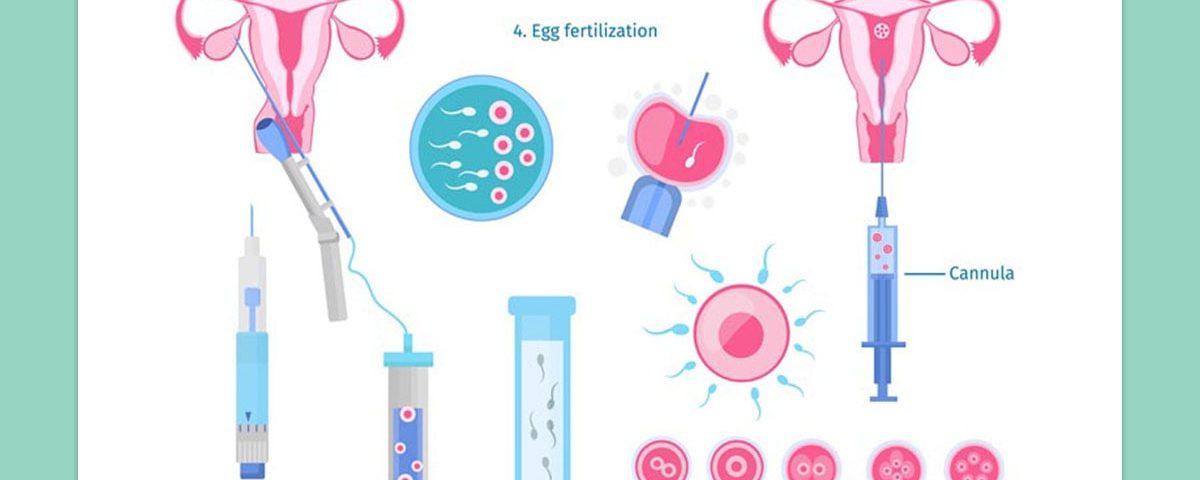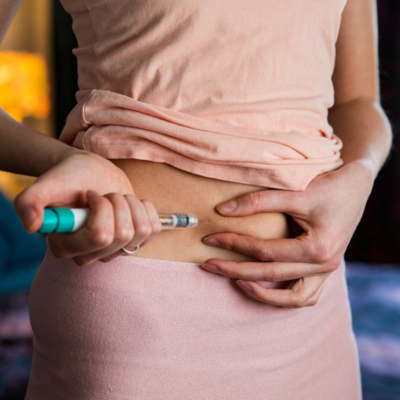
How Much Is IVF in Alabama? Your Complete Guide to Costs and More
April 28, 2025
Does United Healthcare Cover IVF? Your Guide to Fertility Coverage
April 28, 2025How Much Does an IVF Procedure Cost? Your Guide to Understanding the Price Tag
Starting a family can feel like a dream come true, but for many, the path to parenthood isn’t as simple as they’d hoped. If you’re exploring in vitro fertilization (IVF), you’re probably wondering about the cost—and you’re not alone. IVF is a life-changing option for millions, yet its price can feel like a big, confusing puzzle. Don’t worry, though—this guide is here to break it all down for you. We’ll dive into what IVF costs in 2025, why prices vary so much, and how you can plan for it without losing sleep. Plus, we’ll uncover some hidden factors and fresh insights you won’t find everywhere else.
What Is IVF, Anyway?
Before we talk dollars and cents, let’s get clear on what IVF is. IVF stands for in vitro fertilization, a process where doctors take eggs from a woman’s ovaries, mix them with sperm in a lab, and then place the resulting embryo back into the uterus to grow into a baby. It’s like giving nature a little high-tech nudge. People turn to IVF for all sorts of reasons—maybe they’re dealing with infertility, or they’re a same-sex couple, or they want to avoid passing on certain genetic conditions.
The process isn’t quick. It usually takes a few weeks per “cycle,” and sometimes it takes more than one try to get pregnant. That’s why understanding the cost is so important—it’s not just a one-time fee.

The Big Picture: How Much Does IVF Cost in 2025?
So, let’s get to the number everyone wants to know: how much does IVF cost? In the United States in 2025, a single IVF cycle typically ranges from $12,000 to $25,000. That’s a wide range, right? The average sits around $15,000 to $20,000, but where you land depends on a bunch of factors we’ll unpack soon.
Here’s a quick snapshot based on recent data:
- Basic IVF Cycle: $12,000–$17,000 (just the essentials—meds and extras not included).
- With Medications: Add $3,000–$5,000 more.
- Fancy Add-Ons (like genetic testing): Could push it to $20,000–$25,000 or higher.
Compare that to childbirth itself, which can cost $13,000 to $22,000 depending on whether it’s a vaginal delivery or a C-section. IVF isn’t cheap, but it’s in the same ballpark as bringing a baby into the world.
Why such a big range? Location, clinic reputation, and your specific needs all play a role. For example, IVF in New York City or Los Angeles might hit the higher end, while a clinic in a smaller town could be closer to $12,000. Posts on X in 2025 even peg some cycles as high as $25,000, with users debating how tough it is to afford.
Breaking Down the Costs: What’s Included in an IVF Cycle?
Think of an IVF cycle like a recipe—there are a bunch of ingredients, and each one adds to the bill. Here’s what you’re paying for:
1. Initial Consultations and Tests
Before you even start, clinics need to check you out. Blood tests, ultrasounds, and semen analysis can cost $500 to $2,000. This step makes sure your body’s ready for the process.
2. Fertility Medications
These drugs tell your ovaries to make more eggs. They’re a big chunk of the cost—usually $3,000 to $5,000 per cycle. Some people need more meds or pricier ones, which can bump it up.
3. Egg Retrieval and Lab Work
This is the high-tech part. Doctors use a needle (don’t worry, you’re asleep!) to grab the eggs, and then lab pros mix them with sperm. This step runs $5,000 to $10,000, depending on the clinic.
4. Embryo Transfer
Once the embryos are ready, they’re placed in the uterus. This costs about $1,500 to $3,000. If you freeze extra embryos for later, add $500 to $1,000 per year for storage.
5. Extras That Add Up
- Genetic Testing (PGT): Want to screen embryos for health issues? That’s $2,000–$5,000.
- Donor Eggs or Sperm: Using donated eggs can cost $20,000–$45,000 total. Sperm is cheaper, around $500–$1,500.
- ICSI: If sperm needs a little help, intracytoplasmic sperm injection (ICSI) adds $1,000–$2,000.
Here’s a simple table to see it all at once:
| Service | Cost Range |
|---|---|
| Consultations/Tests | $500–$2,000 |
| Medications | $3,000–$5,000 |
| Egg Retrieval + Lab | $5,000–$10,000 |
| Embryo Transfer | $1,500–$3,000 |
| Genetic Testing (PGT) | $2,000–$5,000 |
| Donor Eggs | $20,000–$45,000 |
| Embryo Storage (yearly) | $500–$1,000 |
Why Does IVF Cost So Much?
You might be thinking, “Wow, that’s a lot—why is it so expensive?” It’s a fair question. IVF isn’t just a doctor’s visit; it’s a complex dance of science, skilled people, and fancy equipment. Here’s what drives the price:
- Specialists: Reproductive endocrinologists aren’t your average doctors—they’ve got years of extra training.
- Labs: Those clean, high-tech labs where embryos grow? They’re pricey to run.
- Meds: Fertility drugs are custom-made and don’t come cheap.
- Time: Each cycle takes weeks of monitoring, tweaking, and care.
A 2024 study from Stanford found that the emotional and economic toll of infertility hits hard—IVF’s cost reflects not just the process but the hope it offers. Yet, many say it’s worth every penny when they hold their baby.
Hidden Costs You Might Not Expect
Most articles stop at the basics, but there’s more to the story. These sneaky extras can catch you off guard if you’re not prepared:
1. Multiple Cycles
Only about 30–40% of IVF cycles lead to a baby for women under 35, and success drops with age. If it doesn’t work the first time, you might need 2–3 cycles, pushing your total to $30,000–$60,000. Clinics don’t always highlight this upfront.
2. Travel and Time Off
Live far from a clinic? Gas, flights, or hotel stays add up. Plus, you might need days off work for appointments—lost wages can sting.
3. Emotional Support
Infertility’s tough. Therapy or support groups (around $50–$150 per session) can help, but they’re rarely in the budget.
I talked to a friend who went through IVF in 2024. She said, “We planned for one cycle, but it took three. The travel and stress were way more than we expected.” It’s a reminder to look beyond the clinic’s quote.
Interactive Quiz: What’s Your IVF Cost Range?
Curious where you might land? Take this quick quiz (just tally your “yes” answers):
- Do you live in a big city like LA or NYC? (Yes = +$2,000)
- Are you over 35? (Yes = +$5,000 for possible extra cycles)
- Want genetic testing? (Yes = +$3,000)
- Using donor eggs or sperm? (Yes = +$10,000–$20,000)
- Have insurance that covers nothing? (Yes = +$5,000)
- 0–1 Yes: You’re likely at $12,000–$15,000.
- 2–3 Yes: Think $18,000–$25,000.
- 4–5 Yes: Could be $30,000+.
This isn’t exact, but it gives you a ballpark. Chat with a clinic for a real quote!
Does Insurance Cover IVF?
Here’s the tricky part: insurance is a mixed bag. In 2025, only 21 states require some IVF coverage, and even then, it’s spotty. If you’re lucky, your plan might cover tests or meds, cutting costs by $5,000 or more. But most people pay out of pocket—about 70% of IVF patients, according to the American Society for Reproductive Medicine (ASRM).
Check your policy. Look for terms like “infertility treatment” or “ART” (assisted reproductive technology). If it’s vague, call your insurer. Some companies, like Starbucks or Google, offer IVF benefits—worth asking your boss about!
How Location Changes the Price
Where you live matters. IVF in the U.S. is pricier than in many countries. Here’s a global peek:
- Canada: $10,000–$15,000 (weaker dollar helps).
- UK: £5,000–£8,000 (~$6,500–$10,500), often with NHS help.
- India: $3,000–$5,000, a hotspot for “fertility tourism.”
In the U.S., coastal cities top the charts, while Midwest or Southern clinics might save you a few grand. X users in 2025 note this gap, with some joking about “IVF vacations” abroad.
New Trends in IVF Costs: What’s Happening in 2025?
IVF’s evolving, and 2025 brings fresh twists. Here’s what’s buzzing:
1. Low-Cost IVF Options
Some clinics now offer “mini-IVF” with fewer drugs, dropping costs to $5,000–$8,000. Success rates are lower, but it’s a game-changer for budget-conscious folks. A 2024 study in Fertility and Sterility showed mini-IVF works best for younger patients with good egg reserves.
2. Government Push
In February 2025, a White House order called for better IVF access, hinting at future subsidies. No big changes yet, but it’s a sign costs could dip if funding kicks in.
3. Tech Breakthroughs
Automation in labs (think robots handling embryos!) might cut fees by 10–20% in the next few years, per a 2023 PMC report. It’s not widespread yet, but it’s coming.
Practical Tips to Save on IVF
You don’t have to break the bank. Here are real ways to cut costs:
✔️ Shop Around: Call 3–5 clinics. Prices vary, and some offer discounts for first-timers.
✔️ Look for Grants: Groups like BabyQuest give $5,000–$15,000 to qualifying families.
✔️ Finance It: Many clinics have payment plans—$500/month beats a lump sum.
✔️ Tax Breaks: The IRS lets you deduct medical expenses over 7.5% of your income. IVF counts!
❌ Don’t Skimp on Quality: A cheap clinic with low success rates might cost more in the long run.
My cousin saved $3,000 by switching clinics after asking about package deals. It’s worth a few phone calls.
Poll: What’s Your Biggest IVF Worry?
Let’s hear from you! Pick one:
A) The cost
B) Success rates
C) Emotional stress
D) Finding a good clinic
Drop your answer in the comments—I’ll tally them up next week!
IVF Success Rates: Is It Worth the Price?
Cost isn’t just about money—it’s about what you get. Success rates vary by age:
- Under 35: 40–50% per cycle.
- 35–40: 25–35%.
- Over 40: 10–15% (or less with own eggs).
A 2021 ASRM report says frozen embryo transfers (FET) now beat fresh ones, with a 5–10% higher success rate. That’s good news if you’re freezing extras—it’s like a bonus chance without a full cycle’s cost.
But here’s a twist: some clinics juice their stats by cherry-picking younger patients. Dig into their data—ask for “live birth rates” by age group, not just “pregnancy rates.”
Unique Insight: The Cost of Waiting
Here’s something you won’t see everywhere: delaying IVF can cost you more than you think. Every year past 35, your egg quality drops, and success rates fall. A 2023 NCBI study found women who waited 2–3 years spent 20–30% more on extra cycles. Freezing eggs early (around $10,000) might save you $20,000 later if IVF becomes necessary.
Take Sarah, 38. She waited, hoping to conceive naturally. Three years and $45,000 later, she wished she’d frozen eggs at 34. Time’s a hidden expense—plan ahead if you can.

What About Donor Eggs or Surrogacy?
If IVF with your own eggs isn’t working, donor eggs or surrogacy might come up. These options jack up the price:
- Donor Eggs: $20,000–$45,000. You’re paying for the donor’s cycle, plus legal fees. Success rates jump to 50–60%, though.
- Surrogacy: $50,000–$200,000. X posts in 2025 highlight this wild range—legal stuff, surrogate pay, and agency fees pile on.
It’s a big leap, but for some, it’s the golden ticket. A 2024 Grand View Research report predicts surrogacy costs will climb as demand grows.
Mini Case Study: A Real IVF Journey
Meet Jen and Mike, a couple from Ohio. In 2024, they budgeted $15,000 for IVF. First cycle: $18,000 with meds and testing. No luck. Second cycle: $16,000 (they skipped some extras). Success! Total spent: $34,000. Jen says, “We didn’t expect the emotional rollercoaster—or the extra $4,000 in travel and therapy.” Their story shows how costs creep up, but also how persistence pays off.

Your IVF Budget Checklist
Ready to plan? Use this step-by-step guide:
- Get a Quote: Call clinics for a detailed breakdown.
- Check Insurance: See what’s covered—every dollar helps.
- Estimate Cycles: Assume 1–3 tries based on your age/health.
- Add Extras: Factor in travel, meds, or storage.
- Save Smart: Set aside 10–20% more for surprises.
Total up your numbers. If it’s tight, start small—maybe freeze eggs now, IVF later.
Final Thoughts: Is IVF Worth It?
IVF’s price tag is steep, no doubt—$12,000 to $25,000 per cycle, sometimes more. But for the 1 in 6 couples facing infertility, it’s not just about money. It’s about hope, family, and a shot at something priceless. With new low-cost options, tech advances, and a little planning, it’s more doable than ever in 2025.
What’s your take? Have you done IVF, or are you thinking about it? Share your story below—I’d love to hear how you’re navigating this journey.




